Discorsopagurus schmitti (Stevens, 1925)Common name(s): Tubeworm hermit |
|
| Synonyms: Pylopagurus schmitti, Orthopagurus schmitti | 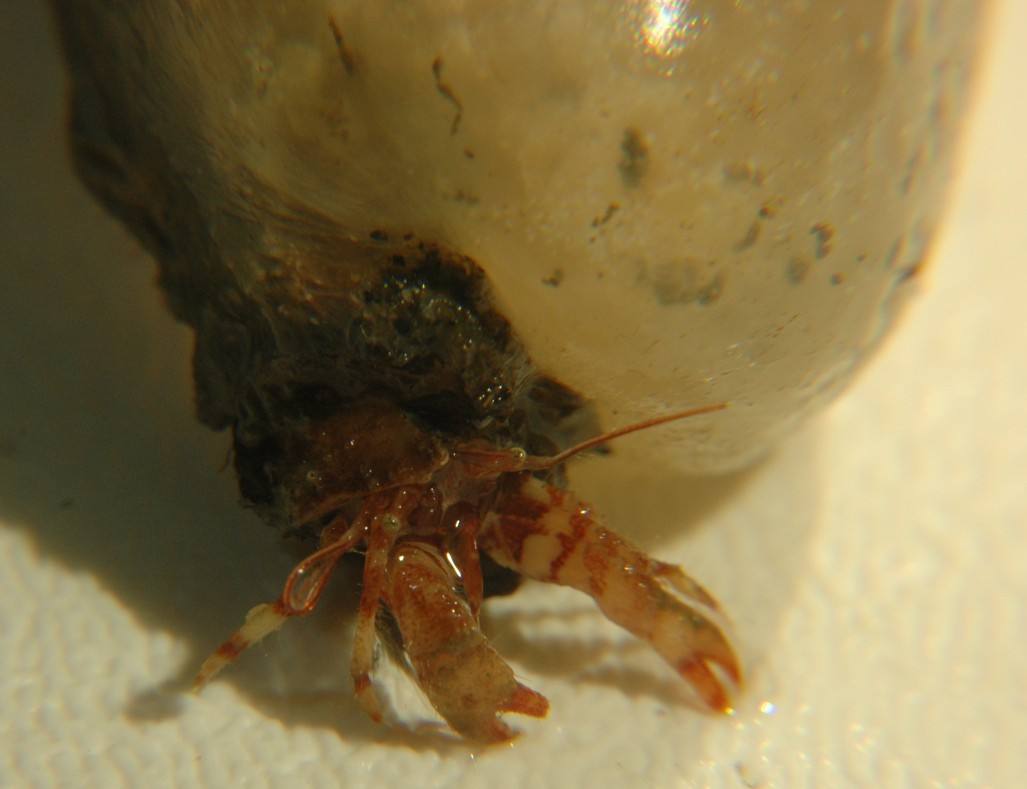 |
| Phylum Arthropoda
Subphylum Crustacea Class Malacostraca Subclass Eumalacostraca Superorder Eucarida Order Decapoda Suborder Pleocyemata Infraorder Anomura Superfamily Paguroidea Family Paguridae |
|
| Discorsopagurus schmitti from 15 m depth, Coffin Rocks. Animal is in a tubeworm tube that is heavily overgrown with a white colonial tunicate. Leg span in photo approximately 1 cm. | |
| (Photo by: Dave Cowles, August 2005) | |
How to Distinguish from Similar Species: The palm of the right chela of Orthopagurus minimus is wider at the origin of the dactyl than it is at the base, and it is usually found in the shells of scaphopods (tusk shells). Its right claw is much larger than the left and it holds it straight out in front of itself while walking.
Geographical Range: Sitka Sound, AK to Puget Sound; Japan
Depth Range: Mostly subtidal; low intertidal to 220 m
Habitat: In tubes of serpulid or sabellarid tubeworms (usually Sabellaria cementarium or Serpula vermicularis), rarely in snail shells. Inland waters and open coast.
Biology/Natural History: Females usually live in attached tubes, and males in broken-off tubes. Can filter feed using both the third maxillipeds and the antennae, plus catches small pieces of drift material.
| Return to: | |||
| Main Page | Alphabetic Index | Systematic Index | Glossary |
References:
Dichotomous Keys:Coffin, 1952 (as Orthopagurus schmitti)
Hart, 1982
Kozloff 1987, 1996
Wicksten 2009
General References:
Jensen,
1995
Kozloff,
1993
Scientific Articles:
Web sites:
General Notes and Observations: Locations, abundances, unusual behaviors:
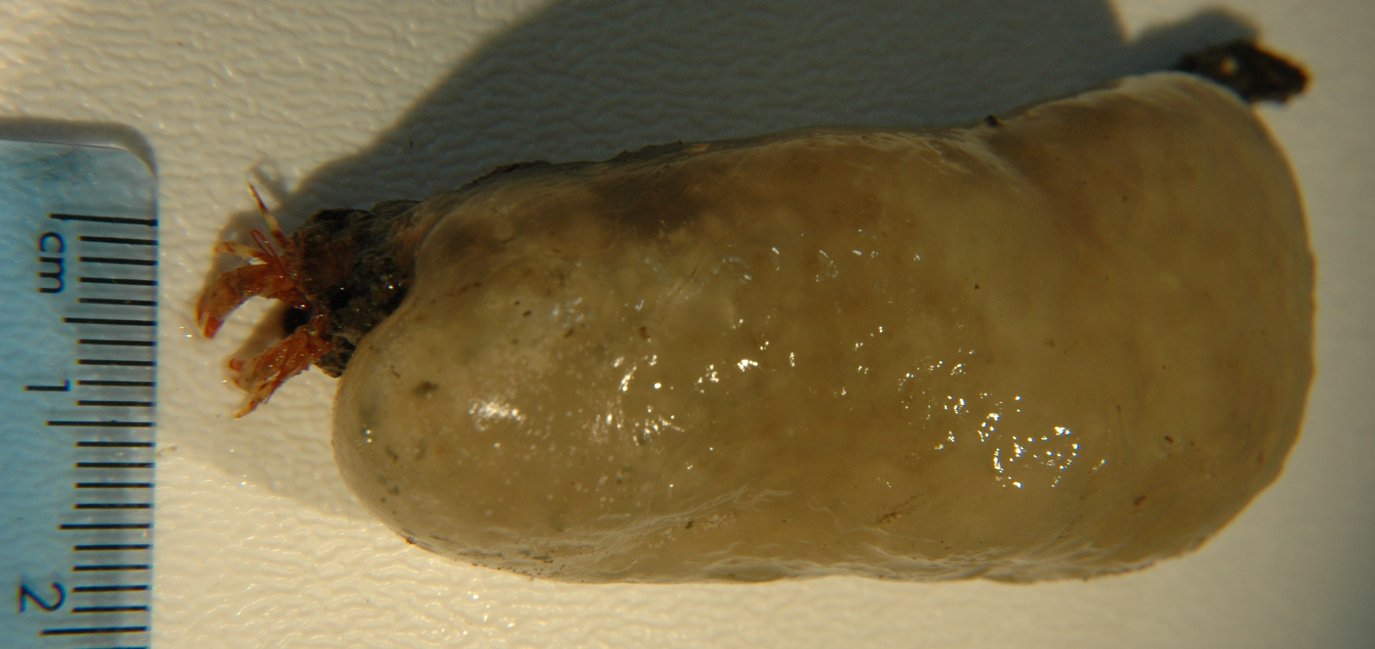
This view shows the entire tube and tunicate the hermit crab is carrying. The total mass is so large that the hermit crab can barely crawl along. Photo by Dave Cowles, August 2005
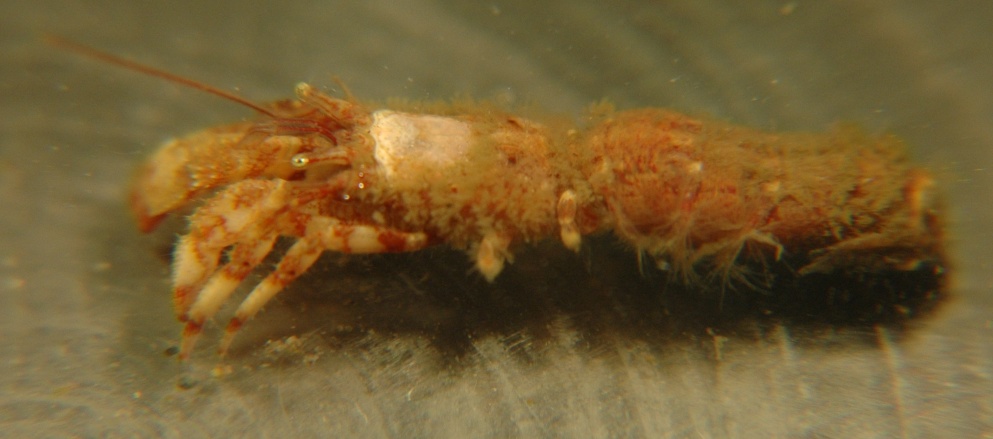
Animal out of the tube. Note the straight abdomen, the many
setae
on the body, and the star-shaped pleopods. Note also the two
small
rear walking legs.
Total length about 2 to 2.5 cm.
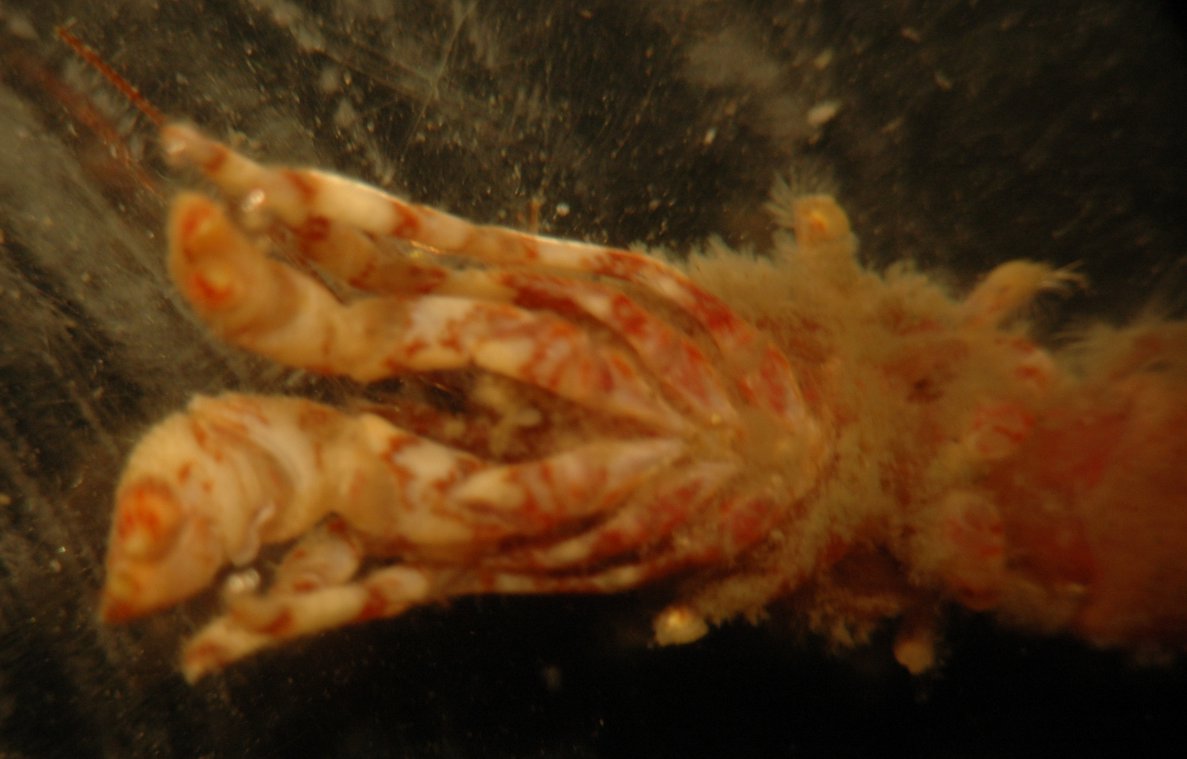
In this ventral view of the thorax one can see the relative sizes of
the right and left chelae, the three long first walking legs and the
two
short rear walking legs, and the abundant setae.
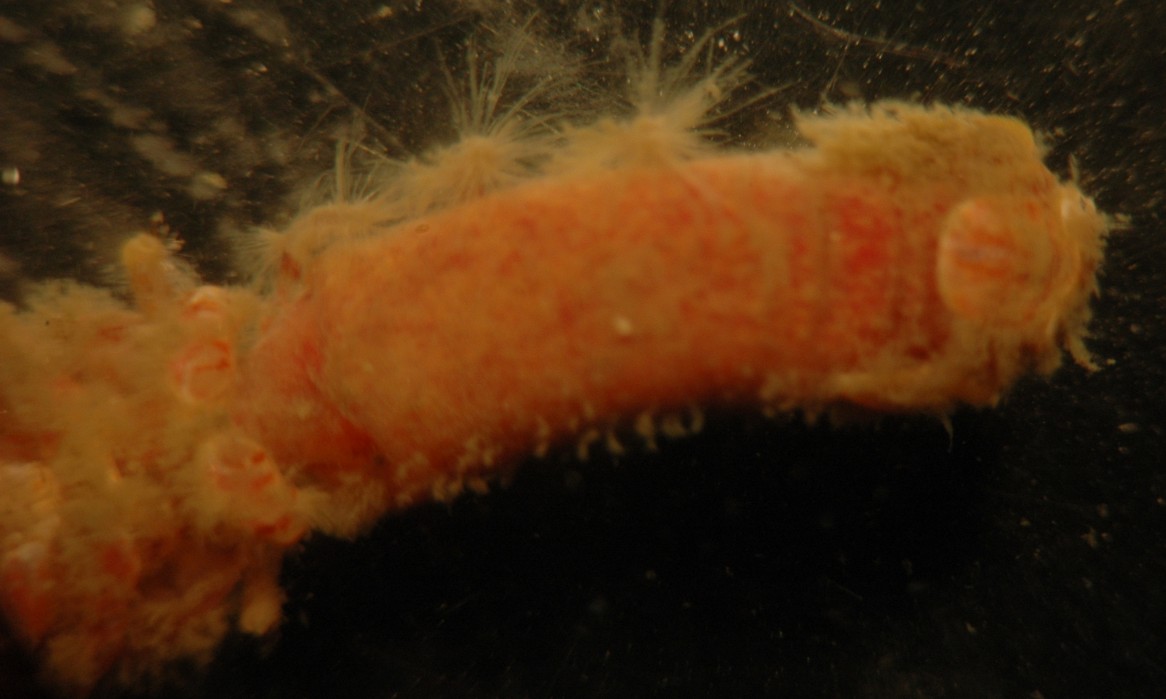
In this ventral view of the abdomen one can see the star-shaped
pleopods
on the left side, the symmetrical uropods, and the telson which does
not
have a median groove.
I am guessing that this is a female, and that the star-shaped pleopods are for holding eggs. Although the animal was in a technically movable tube, it was so heavily overgrown that the animal could barely crawl.
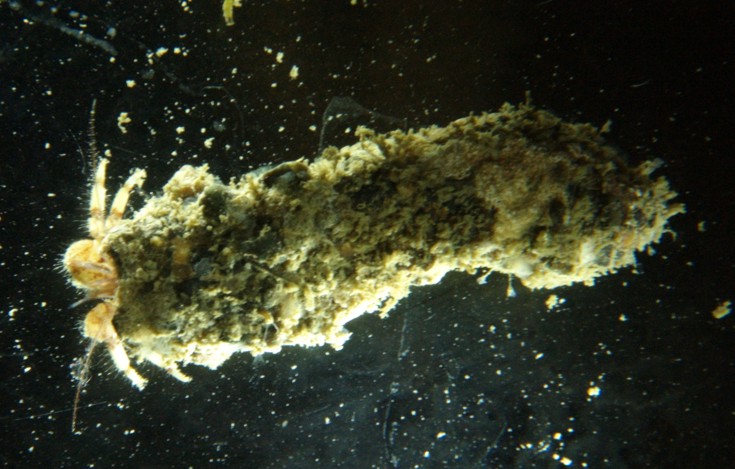
Another individual, collected at about 130 m depth from the channel
between Lopez and San Juan Islands, is living in a tubeworm tube which
is encrusted with stones and tiny barnacles. Photo by Dave
Cowles,
July 2012
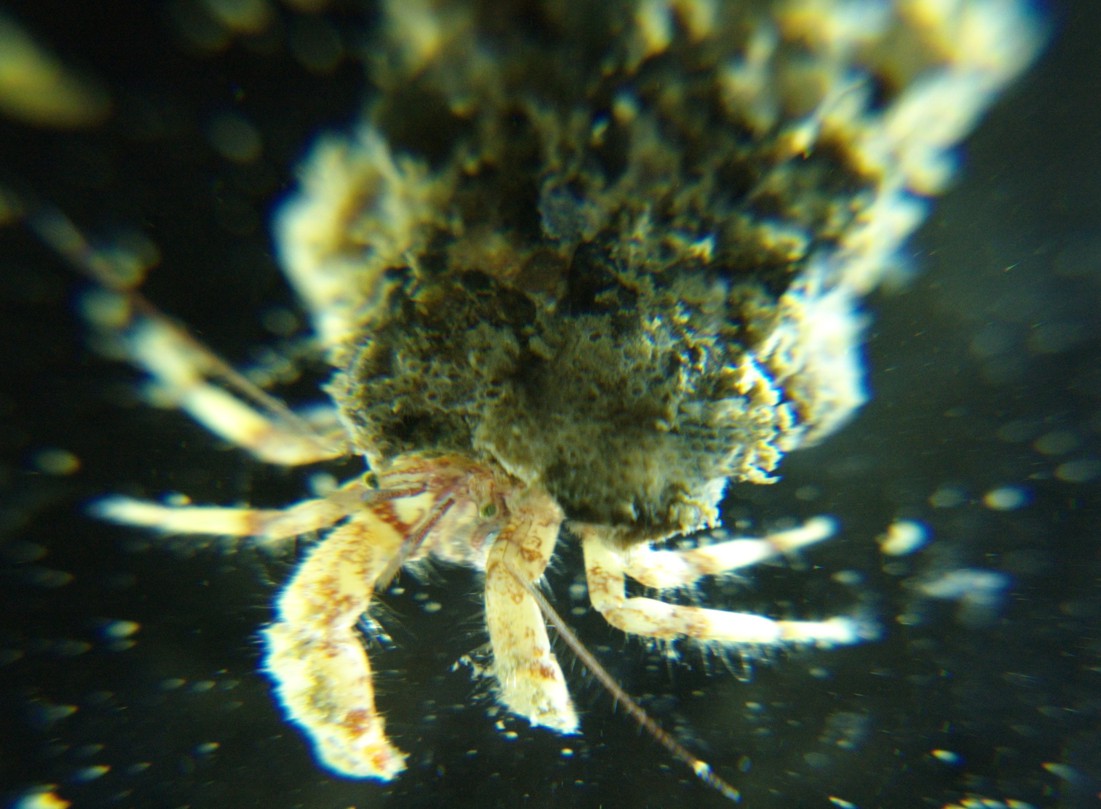
A closeup of the same individual.
Authors and Editors of Page:
Dave Cowles (2005): Created original page